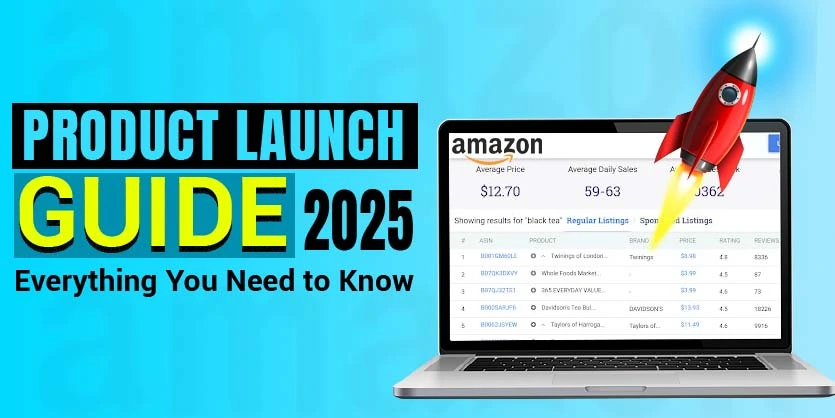Amazon sellers often grapple with the question of whether to group or separate product listings, especially when variations come into play. While combining listings can consolidate reviews and boost visibility, separating them can maximize search presence. In this comprehensive guide, we’ll explore when and why to merge or separate product variations, ensuring you optimize your rankings and sales.
Why Amazon Variations Are Crucial
Variations—such as different colors, sizes, or styles—play a significant role in Amazon’s marketplace. They allow sellers to offer customers more options within a single listing, potentially enhancing the shopping experience. But knowing when to combine or separate listings is key to maximizing your sales potential.
As Nawshad from Ecomclips points out in the YouTube video, merging variations isn’t just about reviews—it’s a strategic decision impacting visibility, rankings, and conversions.
The Benefits of Combining Listings
1. Consolidated Reviews
Merging listings can consolidate customer reviews, presenting potential buyers with a more robust social proof. For example, combining a listing with 50 reviews with another with 60 reviews results in 110 visible reviews, creating a stronger first impression.
Key Insight:
Reviews are impactful but may not significantly affect conversions beyond the initial boost. Research from Jungle Scout indicates that going from zero to one review has the most dramatic effect, with diminishing returns as the review count grows.
2. Enhanced Organic Visibility
By grouping variations, you streamline your product’s SEO, creating a single, stronger listing that ranks higher for relevant keywords. This strategy is especially effective for new or underperforming products.
> Pro Tip: If you’re launching new products, combining them with existing successful listings can help gain traction faster.
3. Improved Customer Experience
When variations are combined, customers can easily browse through options without navigating multiple listings. This seamless shopping experience often leads to higher conversion rates.
When to Separate Listings
Despite the benefits of combining variations, there are instances where separating them is more strategic.
1. Dominating Search Results
Amazon typically displays only one variation of a parent listing in search results. If you have multiple high-performing products, keeping them separate can increase their chances of appearing on the first page.
Example:
Searching for “men’s shoes” may show a listing with multiple color variations, but only one color—e.g., black—is visible. By keeping top-performing colors as separate listings, you can occupy more spots in search results, doubling or tripling your visibility.
2. Preserving Rankings
If you merge two strong listings, you risk diluting their individual rankings. This is especially true for products that are already performing well on their own.
3. Google SEO Impact
Changes to parent listings can disrupt external traffic from search engines like Google. If your parent ASIN contributes significantly to organic traffic, altering it could harm your rankings, taking months to recover.
> Pro Tip: Be cautious and deliberate with parentage changes to avoid losing momentum in both Amazon and Google rankings.
Rules of Thumb for Variations
To simplify your decision-making, follow these two golden rules:
1. Combine New Products:
Launching a new product? Combine it with an established listing to leverage existing reviews and ranking.
2. Separate Top Performers:
If you have two or more high-performing listings, keep them separate to maximize their visibility and sales potential.
How to Handle Parentage Strategically
Parentage changes aren’t just a one-click operation; they require careful planning. Here’s how to approach them:
1. Assess Performance Metrics:
Review the sales performance and conversion rates of your products. If separating listings significantly boosts visibility without compromising sales, go for it.
2. Monitor External Traffic:
Track your organic traffic from Google. Tools like Google Analytics and Helium 10 can help you gauge how changes impact visibility across platforms.
3. Consult Experts:
If unsure, seek advice from Amazon experts. At Ecomclips, we specialize in optimizing parentage strategies tailored to your business needs.
Real-Life Example: The Men’s Shoes Scenario
Imagine you sell men’s shoes in three colors: black, red, and blue. The black variation outperforms others, consistently ranking on the first page.
If these variations are combined, only the black shoe will appear in search results, limiting exposure for red and blue. By separating them, you increase the chances of all three appearing on the first page, boosting overall sales.
Backlink Recommendations for More Insights
For sellers looking to deepen their Amazon expertise, these resources are invaluable:
– Drive External Traffic to Amazon Listings and Boost Your Sales
– Amazon Q4 2024 – Ultimate Guide for New Sellers
– Amazon Best Seller Rank (BSR) Strategies in 2024
Conclusion
Mastering Amazon’s parentage requires a blend of strategic thinking and data analysis. By understanding when to combine or separate variations, you can optimize your rankings, enhance visibility, and boost sales.
Remember, decisions around parentage impact not just your Amazon performance but also your external traffic from Google. Be thoughtful and deliberate, leveraging tools and expert advice where needed.
At Ecomclips, we’ve helped countless sellers navigate these challenges to achieve long-term success. For personalized support, email us at info@ecomclips.com, or drop your questions in the comments below.
Start implementing these strategies today and take your Amazon business to the next level!



